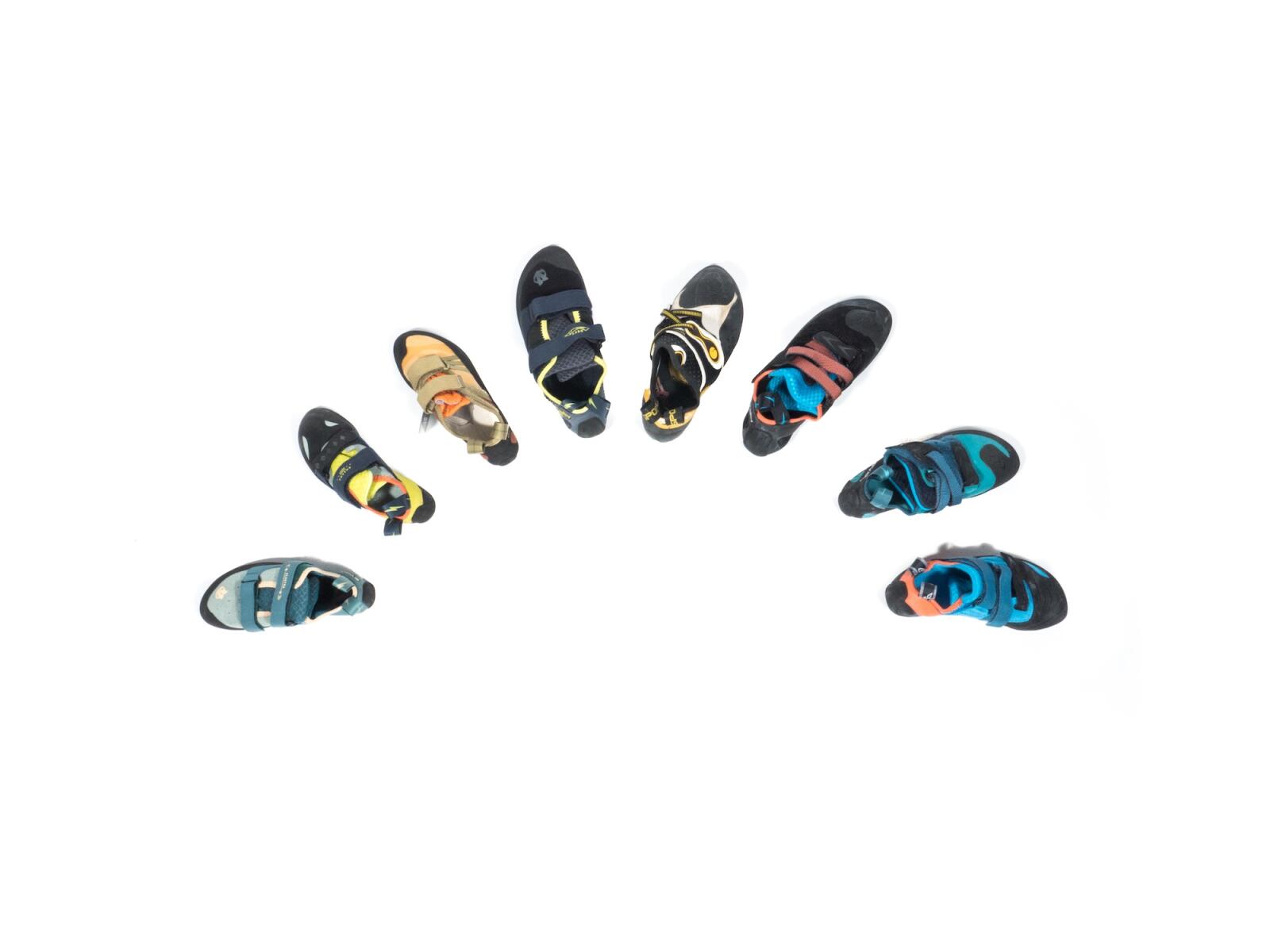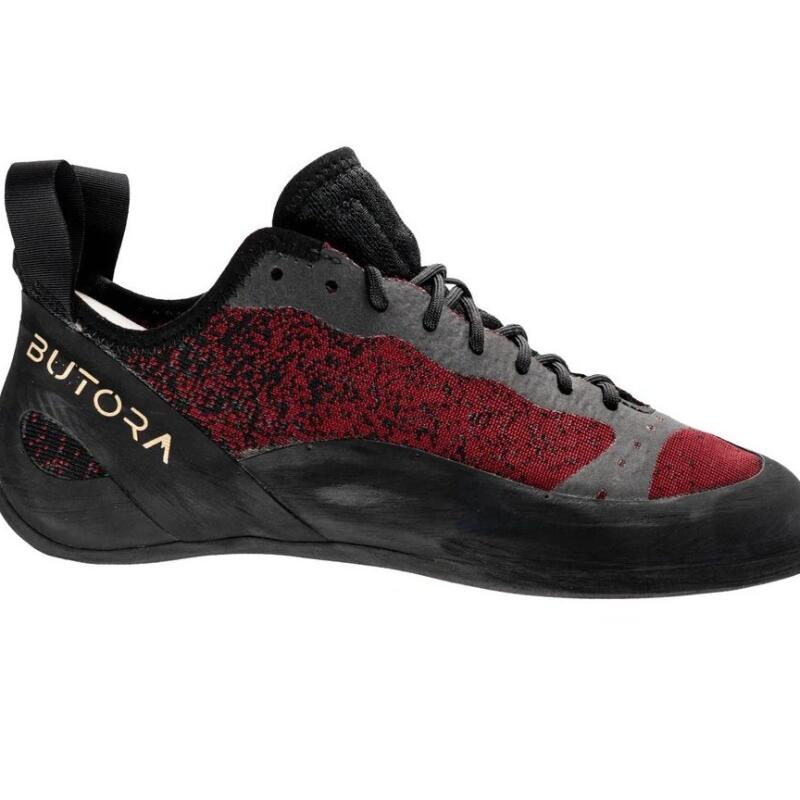Here at ASCEND we want to help you on your journey into rock climbing. Whether you just climbed for the first time or you’ve climbed at gyms all over, ASCEND has put together this guide to all the things you need to know about buying your first pair of climbing shoes. This guide goes over everything from why you should consider your own pair of shoes, things to know and look out for when picking a pair and ASCEND’s recommendations for shoes that make an amazing first pair of climbing shoes.
Why Buy Your Own Climbing Shoes?
So why should you invest in a pair of shoes, why not just rent shoes everytime you want to climb?
Integral, And Only Required Piece Of Equipment
Climbing shoes are the only required piece of equipment to climb at the gym and naturally should be your first purchase when you become a climber. Think of climbing shoes as an investment into your own climbing journey.
Enhanced Experience
Rental shoes are a great way to try out the sport of climbing but they are designed for durability instead of performance. By upgrading to your own pair of shoes, even the cheapest pair, you will enhance your experience and help you grow as a climber.
The main difference between rental shoes and shoes you can purchase will come down to sizing/fit and the rubber. Rental shoe rubber is harder, to help them last longer, but this can make them feel ‘slippery’ on the wall. By purchasing a pair of shoes, you’ll be able to improve your technique and progress as a climber with confidence.
Everyone’s feet are different and because climbing shoes are designed to fit snugly, it’s important to get a shoe that fits your own feet. Each brand has their own fit and finding the right size and model for you is essential. When purchasing a shoe you have a huge variety of options to find that perfect fit.
Long Term Value
In addition to the reasons above, owning your own climbing shoes can represent a great value versus renting in the long run. Rental fees add up, and a quality pair of climbing shoes can last up to several years with proper care and maintenance.
Some Things To Know
Shoe Sizing
The first great mystery of climbing shoes is the sizing. You may have heard things such as ‘your shoes have to be tight!’ or ‘if you don’t downsize your climbing shoes you’re doing it wrong!” and other such phrases that can make picking out a pair of climbing shoes feel overwhelming. Here’s the information you actually need to know about sizing climbing shoes.
It's true, you do want your climbing shoes to fit more snugly than other types of shoes such as running shoes, dress shoes or sneakers. However, you don’t want to crush your feet, especially with your first pair of shoes. You want them to be snug but not painfully tight or you won’t want to wear them. Your first pair should be relatively comfortable, and the models ASCEND recommends your first pair will balance performance with comfort.
Size: Every brand of climbing shoe will handle sizing a little differently, so don’t worry too much about the number on the box, base your decision on how the shoe fits your foot in the moment. ASCEND recommends starting with your athletic shoe size and going up or down from there as necessary. Some brands will fit more true-to-size than others, this is expected and don’t be alarmed if your climbing shoes end up being a radically different size than your sneakers. An ideal fit will have your toes touching the end of the shoe (no extra space!) but your toes shouldn’t be scrunched up, and only slightly bent at most. If your toes are feeling crushed, you should try the next size up! ASCEND recommends trying on as many sizes as available to ensure you find the best fit.
We also want to make sure that the width or volume of the shoe fits your foot. This means the shoe should fit close to your foot all around, and look for big gaps between the shoe and your foot. Most common to see these around your ankle and heel. If your shoes have gaps and slip up and down while moving/climbing this could cause blisters. If you’re struggling with finding the right fit, you should look at shoes that are offered in a wide or narrow fit, or consider a lace-up shoe that allows for more adjustability.
You need to be aware of the material used to construct your shoes. Some traditional materials like real leather will stretch over time. This is both good and bad. The good, is that leather can stretch and help create a more ‘custom’ fit to your foot as they break in. However, the challenge with this for a new climber is it can be tricky to get the size right for your first pair because a leather shoe can stretch out about ½ size on average during break in. Synthetic materials will stretch significantly less which makes sizing significantly easier when trying on new shoes in the store. These models still ‘break in’ and become softer and more pliable over time but they will not change size. Synthetic materials for climbing shoes could be synthetic-leather, microfiber suede, or a textile/cloth woven material.
Rand / “Toe Caps”
The rand of the shoe, also known as the ‘toe caps’, are the front edge of the climbing shoes that goes across the tips of your toes. This is the part of the climbing shoe that will make the most contact with the wall and will be the first part of your shoes to show signs of wear. But don’t worry, climbing shoes can be repaired and keeping a close eye on the wear of your toe caps will help you get the most value out of your investment!
Synthetic vs Leather Uppers
As quickly noted above, climbing shoes will typically be constructed of either authentic leather or a synthetic material. If you see a shoe made from real leather, you can expect that shoe to stretch out during the break-in period, most often the shoe will stretch by about ½ size from when it's new, keep this in mind when sizing your new pair.
Synthetic materials do not stretch nearly as much. This makes it easier to size your first pair of shoes successfully, and while they will also break-in over time, they will not change size in a measurable way.
Board vs Slip Last
The ‘last’ is a term that describes the interior shape of a shoe, as well as how that shoe is physically constructed. Board lasted and Slip lasted shoes each have their own benefits and limitations
Most of our shoes oriented towards newer climbers will be constructed on a board last. Most of the performance oriented models will be built on a slip last. Here’s what you need to know about each construction method
Board Last Models - These shoes will tend to be stiffer overall compared to slip-last. For beginners this is a good thing, because these shoes can provide more support to the bottom of your foot. This stiffness and support comes from the ‘board’, usually a stiffer full length midsole made of plastic, and the upper of the shoe is built around this stiffer ‘board’ providing structure to the shoe.
Models built on a board last also tend to be more comfortable. What they sacrifice in sensitivity and outright performance will result in all day comfort which can mean more time on the wall for new climbers! Board lasted models are more forgiving in sizing, you still want a relatively snug fit but the structural nature of the shoe means you can have a little extra space and not lose all performance.
All models that ASCEND recommends for your first pair of shoes are constructed using the board last method.
Slip Last Models - This construction method results in a softer and more flexible shoe. The trade off from support and comfort is precision and sensitivity. As the climbing gets harder, the holds tend to get much smaller and a more sensitive shoe will allow you to feel more of the holds through the shoe and into your feet. These shoes are constructed around a wood or plastic foot-shaped model, the materials are ‘slipped’ over this model during construction. Slip lasted shoes tend to have thinner midsoles, and midsoles that do not extend from heel to toe making the shoe much more flexible overall.
These models prioritize climbing performance, usually at the expense of comfort. You will often see climbers taking these shoes off in between climbs.



